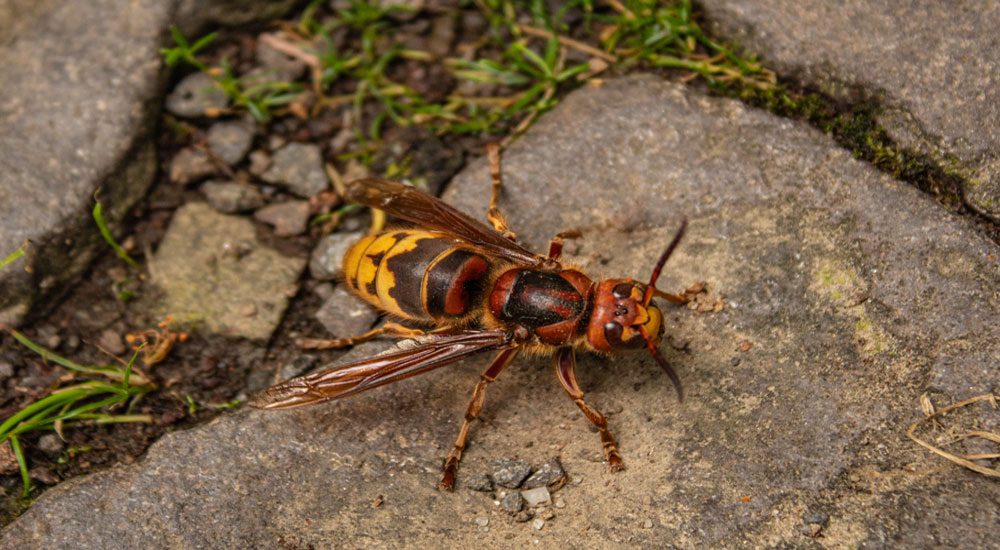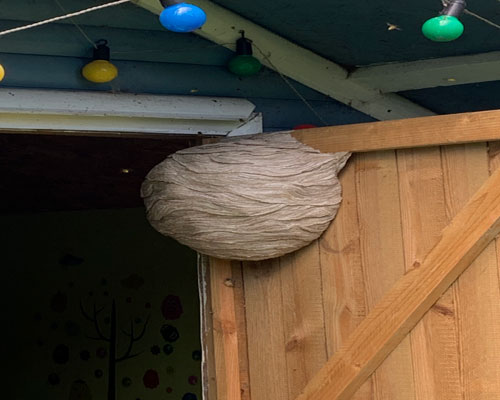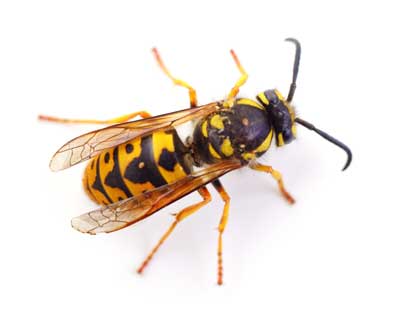The Fascinating World of the Hornet Wasp: Nature’s Misunderstood Guardians

The mere mention of a hornet wasp can make most people tense up or step back. Their large size, striking yellow-and-black markings, and buzzing flight often give them an intimidating reputation. Yet this fear is largely based on misconceptions rather than facts. Behind their fearsome appearance, these insects are some of nature’s most effective pest controllers and vital contributors to ecosystem balance.
Despite their tough image, hornet wasps are key players in the natural world. They help regulate insect populations by preying on harmful pests and even assist in pollination, an overlooked role that supports biodiversity. Without their presence, certain agricultural systems and forest ecosystems would struggle to maintain balance.
The real challenge lies in our understanding. Misinformation and fear have often overshadowed the truth about these insects, leading to unnecessary attempts to remove them. In reality, their ecological benefits far outweigh the risks they pose.
This guide offers a deeper look into the world of hornet wasps, from identification and social behaviour to their crucial ecological roles. By understanding them better, we can shift from fear to appreciation and learn how to coexist peacefully with these guardians of nature.
What is a Hornet Wasp?
Among all wasps, hornets stand out as the largest and most robust. Unlike their smaller cousins, these insects measure between 2.5 and 4.5 centimetres, making them impossible to confuse with common wasps or bees.
Their appearance is striking: most species feature bright yellow-and-black patterns, while some have reddish-brown markings. Their heads are large and rounded, with strong mandibles and large compound eyes, giving them excellent vision for hunting. Muscular thoraxes support powerful wings that create their distinct deep buzz.
Hornets are found worldwide, with different species adapted to various climates. European hornets thrive in temperate forests, while Asian giant hornets prefer mountainous areas with plenty of tree cover. Most species favour wooded environments where they can hunt prey and gather tree sap.
Their nesting habits are equally impressive. Hornets build large, papery nests in hollow trees, abandoned structures, or underground spaces. These nests can house hundreds or even thousands of individuals at peak season, all working together to maintain their colony.

How to Identify a Hornet Wasp
Identifying a hornet wasp involves noting its size, colour, and behaviour. They are much larger than typical wasps and have smooth, sleek bodies. European hornets, for example, display reddish-brown thoraxes with yellow abdomens marked by black bands. Asian giant hornets are more orange-toned with black accents, giving them a unique “helmeted” look.
Flight behaviour is another clue. Hornets move with a deliberate, steady motion quite different from the jittery flight patterns of smaller wasps. Their low-frequency buzzing is loud and easily recognisable.
Hornets often hover around tree bark to feed on sap or strip away plant fibres for nest construction. Unlike bees, they are less interested in pollen and more focused on nectar or protein sources, such as caterpillars and other insects.
Late summer and autumn bring more frequent sightings as these insects seek out sugary foods like ripe fruit or drinks left outdoors. This seasonal behaviour often leads to close encounters with humans.
Hornet Wasp Behaviour and Social Structure
Hornet colonies are highly organised, with a structure that resembles a miniature society. At the centre is the queen, who can live for several years and lays thousands of eggs during her lifetime. In spring, she starts the nest alone, building the first cells and raising her initial brood of workers.
The worker hornets sterile females take over building, foraging, and defending the colony. Despite their short lives (a few weeks during summer), they operate with remarkable teamwork and precision. Some focus on nest expansion, while others hunt or guard the entrance.
As predators, hornets are efficient hunters. They target caterpillars, flies, beetles, and even other wasps. Their powerful mandibles and swift attacks make them apex insect predators. Communication within the colony is highly sophisticated, relying on pheromones, vibrations, and even specific movements to coordinate tasks and signal danger.
Aggression levels rise towards late summer, when colonies are at their largest and resources become limited. During this period, they are more protective of their nests, which explains why encounters can sometimes become tense.
The Importance of Hornet Wasps in Ecosystems
Despite their reputation, hornets provide immense ecological value. They play a critical role in natural pest control, preying on insects that damage crops or spread disease. A single colony can consume thousands of pests in a season, reducing the need for chemical pesticides in agriculture.
In gardens, hornets hunt aphids and caterpillars that harm plants, keeping ornamental and food crops healthier. Their role as pollinators is less prominent but still significant, as they transfer pollen when feeding on nectar. Some plants even rely on large-bodied pollinators like hornets to access deep or complex blooms.
In forests, hornets help maintain insect population balance, ensuring that no single species overwhelms the ecosystem. They also assist in decomposition by consuming dead insects and other organic matter, which speeds up nutrient recycling.
Studies in European forests have shown that areas with thriving hornet populations have healthier trees and fewer pest outbreaks compared to areas where hornets have declined. Their presence is often a sign of a balanced and resilient ecosystem.
Debunking Common Hornet Wasp Myths
Hornets are often misunderstood, with myths painting them as aggressive and dangerous. In truth, they only become defensive when their nest is threatened. Most of the time, they prefer to avoid humans altogether.
While their stings are painful due to their size and venom, serious reactions are rare unless someone is allergic. For most people, the sting causes temporary swelling and discomfort that fades within a day or two.
Another myth is that hornets serve no useful purpose. In reality, their pest-control services alone are worth millions in agricultural benefits each year. Killing one hornet can also make matters worse. Dead hornets release alarm pheromones that attract others and trigger defensive behaviour.
Far from being mindless stingers, hornets display intelligence. They can remember locations, recognise human faces, and solve complex problems related to food gathering and nest construction. These insights highlight just how sophisticated they are.
How to Coexist with Hornets
Peaceful coexistence is possible with a bit of understanding and caution. Observing hornets from a safe distance allows you to appreciate their behaviour without risk. Keeping at least three metres away from nests and avoiding sudden movements reduces the chance of triggering defensive responses.
Around the home, prevention works best. Seal entry points in sheds or attics, and check for early nest building during spring. Secure rubbish bins and clear away fallen fruit to minimise attractants.
When hornets are nearby, staying calm is key. Avoid swatting or making fast movements. If necessary, simply move activities away from their foraging area.
If a nest is too close to high-traffic areas, consult a professional pest control expert. Attempting to remove a nest yourself can be dangerous and often provokes aggression.
Protecting Our Ecological Guardians
The hornet wasp is far more than its fearsome appearance suggests. These insects are essential for controlling pest populations, supporting plant health, and keeping ecosystems balanced. By replacing fear with understanding, we can see them for what they truly are: nature’s guardians.
Conservation efforts should include protecting hornet habitats and reducing unnecessary extermination. By supporting healthy environments, we allow these beneficial insects to continue their important ecological work.
Next time you encounter a hornet wasp, pause to observe rather than panic. Their presence often means the surrounding environment is thriving and well-balanced, a sign of nature working exactly as it should.
